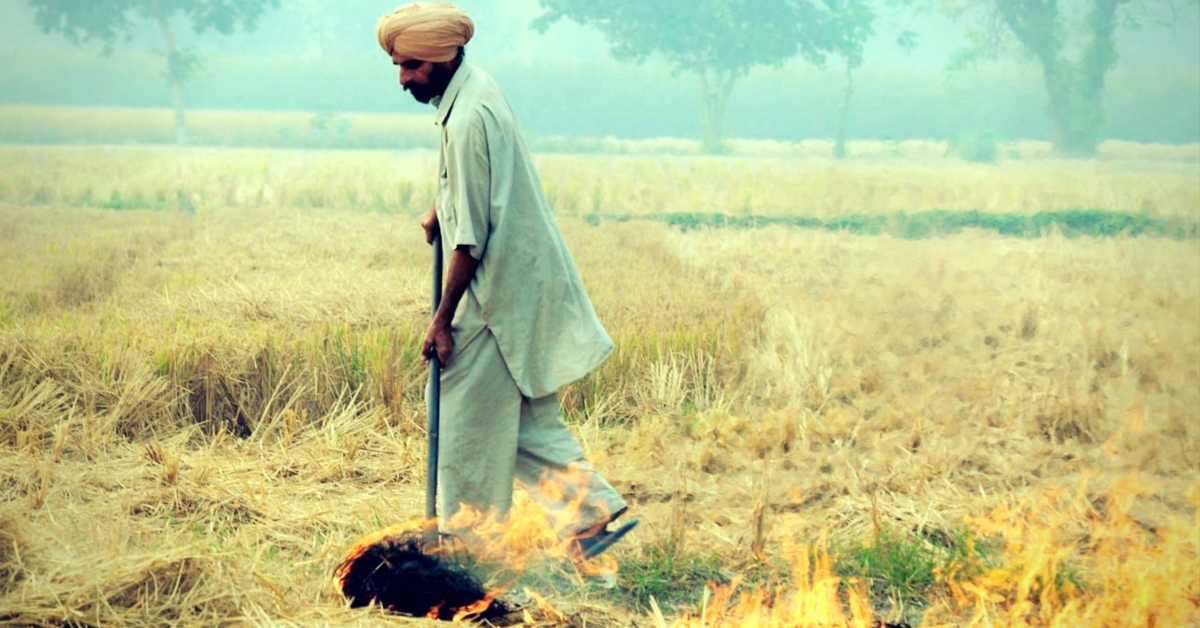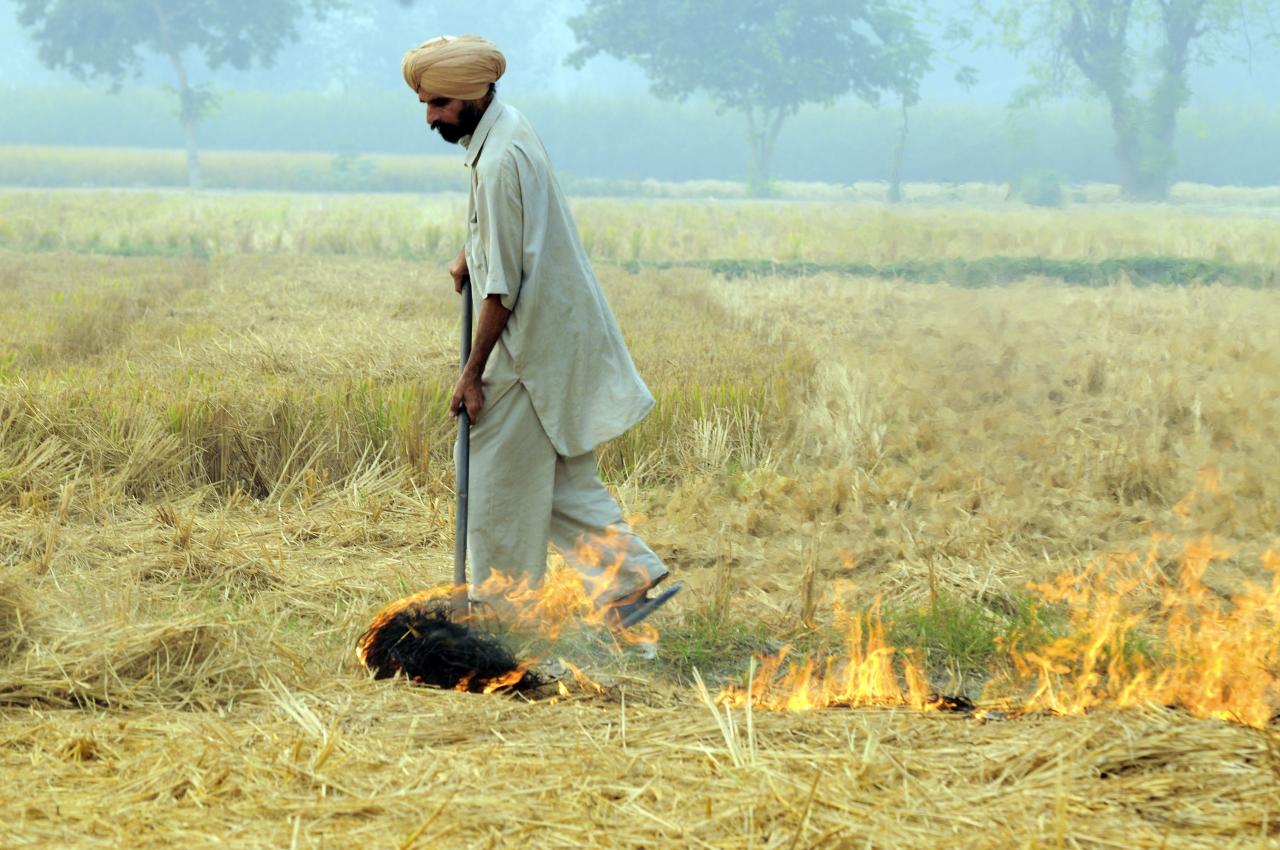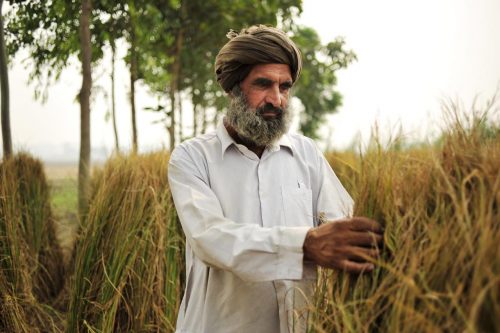Centre Has a Rs 100 Crore Project to Tackle Crop Burning, but We Need More Than Money
On Thursday, the Centre announced a Rs 100 crore project to tackle crop burning. There are already solutions to the problem that require scaling-up.

The problem of air pollution in Delhi and the surrounding national capital region (NCR) is well documented. Among the many factors responsible for the terrible quality of air, is crop burning in the neighbouring states of Punjab, Haryana, Uttar Pradesh and Rajasthan.
This age-old practice of crop residue burning after the harvesting process exacerbates pollution levels in the Delhi-NCR region during winter.
Earlier this week, the Ministry of Environment announced a Rs 100 crore project to tackle crop burning in these northern states. Funding for this project will come from the National Adaption Fund for Climate Change (NAFCC), “leveraging about three times the approved amount from states and farmers,” according to this Hindustan Times report.
“The objective of the NAFCC is to assist State and Union Territories that are particularly vulnerable to the adverse effects of climate change in meeting the cost of adaptation,” says a government release. It had a budgetary provision of Rs 350 crore for 2015-16 and 2016-17, and Rs 181.5 crore (2017-18).
Reports indicate that this project will progress in a phased manner with an initial emphasis on “awareness and capacity building activities.” This project also seeks to “facilitate the adoption of technological solutions to dispose of crop residue in an eco-friendly manner.”

Official estimates indicate that both Punjab and Haryana generate approximately over 30 million tonnes of paddy straw, which are later burnt to reduce the time between harvesting the paddy crop and sowing the winter wheat crop.
Despite repeated ban orders issued by the courts and the National Green Tribunal, this practice continues unabated. Farmers in Punjab and Haryana, however, say there is no affordable alternative to stubble burning, which prepares the land quickly for the next crop.
The practice of crop burning isn’t new, and traditionally most of the residue left behind by the paddy crop is burnt in October and November. Recently, however, another season of crop burning has ensued in April and May after the harvest of wheat and various winter (Rabi) crops.
“Multiple cropping and shortened intervals between crops give a very short window of about 10–15 days during which the field needs to be prepared for the next crop,” says the Centre for Science and Environment. “This does not give enough time for farmers to allow the straw to be incorporated in the soil or use other traditional methods of disposal.”
Increased mechanisation of the harvesting process has also significantly contributed to this problem. According to the Centre for Science and Environment, “the use of mechanised harvesters leave stubble of 10–30 cm in the field, depending on the type of crop, which was not the case earlier with manual harvesting.”
Most farmers, especially the small and marginal ones, cannot afford to hire labour to clear this residue. There are agri-implements (equipment) that can process this stubble and convert it into fuel for a biomass-based power plant. Crop residue can also be used for mushroom cultivation, bedding material for cattle, paper production, among other purposes.
Unfortunately, equipment to process crop stubble is costly, and since its use only extends to two-three weeks in a year, burning is a cheaper and simpler option. There are other solutions under consideration.

These include “subsidies to make these implements accessible to larger number of farmers; co-ownership models for the agri-implements,” says the Centre of Science and Environment.
In Haryana, for example, farmers have begun to grow mushroom using crop residue (as material required for the preparation of compost).
Read also: Haryana Girl Takes a Brave Stand against Air Pollution, Reports Her Father for Stubble Burning
Farmers in Punjab, meanwhile, have started using an environment-friendly ‘waste decomposer’ solution. The small bottle of solution costs Rs 20 and is developed by the National Centre for Organic Farming and Ministry of Agriculture and Farmers Welfare. Officials claim that it can decompose over 10,000 metric tons of biowaste in 30 days.
The emphasis must be on ways in which authorities can scale up the implementation of such solutions. This requires political will. Any success on this front will make it easier for these farmers to dispose/utilise their crop residue without polluting the air around them and nearby cities.
Like this story? Or have something to share? Write to us: [email protected], or connect with us on Facebook and Twitter.
NEW: Click here to get positive news on WhatsApp!
If you found our stories insightful, informative, or even just enjoyable, we invite you to consider making a voluntary payment to support the work we do at The Better India. Your contribution helps us continue producing quality content that educates, inspires, and drives positive change.
Choose one of the payment options below for your contribution-
By paying for the stories you value, you directly contribute to sustaining our efforts focused on making a difference in the world. Together, let's ensure that impactful stories continue to be told and shared, enriching lives and communities alike.
Thank you for your support. Here are some frequently asked questions you might find helpful to know why you are contributing?


This story made me
-
97
-
121
-
89
-
167














